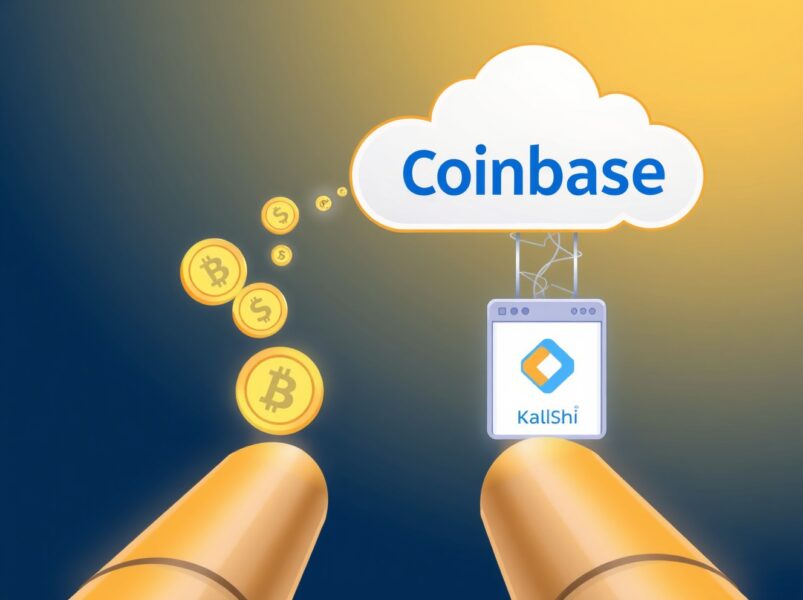Bitcoin price trades near $117,000 after the Federal Reserve decision on interest rates, as the 1,065-day post-halving window approaches.
The Fed cut rates by 25bps yesterday, placing Bitcoin’s near-term path at the intersection of policy and a cycle marker Axios says has historically captured a “final high” roughly 1,065 days after a prior cycle low.
The test window runs through late September and early October, then the market will trade into Thanksgiving on flow, dollar, and rate dynamics that can either extend the advance or start the topping process that prior cycles paired with drawdowns of 40 to 60 percent, according to Axios.
Spot ETF demand is the first lever to watch because it turns the cycle into a flow problem. According to CoinShares’ latest weekly fund-flow update, U.S. spot Bitcoin ETFs saw renewed net inflows in late August and early September, measured in billions of dollars, while SoSoValue tracked a mid-September multi-session inflow streak with a single-day print of around $260 million on September 15.
Those figures contrast with the post-halving issuance of about 452 Bitcoin per day, calculated as 3.125 Bitcoin per block times roughly 144 blocks per day. When multi-day ETF demand absorbs several thousand Bitcoin per week, the market’s ability to distribute inventory at the highs narrows, and topping processes can lengthen into a plateau rather than a single peak.
Macro conditions set the second lever.
This month, the euro touched a four-year high against the dollar as cut expectations increased, while front-end Treasury yields eased into the meeting.
A softer dollar lowers global financial conditions and often correlates with higher beta across risk assets. At the same time, domestic inflation has cooled from last year’s pace, with August headline CPI at 2.5 percent year over year and core at 3.0 percent, according to the Bureau of Labor Statistics.
The policy outcome will shape whether those tailwinds persist or fade. Throughout the rest of 2025, cuts with dovish language that emphasizes progress on inflation and downplays the need for quick reversals would support the dollar’s drift lower and extend the risk window.
Cuts that emphasizes vigilance on inflation and a limited runway for further easing would keep rates sticky and reduce the impulse. A no-cut outcome was a low-probability branch, yet it would have tightened financial conditions into quarter-end and left ETF demand to carry more of the load.
Mining economics frame how deeply price moves are transmitted to the supply side. Hashrate has hovered around 1.0 to 1.12 zettahash per second in recent weeks, with network difficulty near a record around 136 trillion, according to Hashrate Index tracking.
That backdrop keeps hashprice near 53 to 55 dollars per petahash per day, levels broadly consistent with Luxor’s spot readings this month. Because hashprice scales roughly with Bitcoin price and inversely with hashrate, bands for Q4 can be approximated by combining price paths with modest hashrate creep as new rigs energize. Fees remain a smaller component in the current lull, so price carries most of the signal into miner cash flow.
A simple baseline clarifies the inputs that feed scenario bands through Thanksgiving, November 27.
| Baseline input | Value | Source or method |
|---|---|---|
| Spot price anchor | ~$116,000 | Market level today |
| Implied volatility | ~30–40% (near-dated) | Deribit DVOL context in early September |
| Issuance | ~452 BTC/day | 3.125 BTC subsidy × ~144 blocks |
| Hashrate | ~1.0–1.1 ZH/s trending up | Hashrate Index |
| Hashprice | ~$53–$55 per PH/day | Luxor-referenced spot |
With those inputs, the grid below lays out price and miner hashprice ranges into late November across policy tone and ETF flow states. These are bands, not point targets, designed to reflect how cut tone and net flows propagate into price and miner revenue under low-fee conditions and modest hashrate growth.
| ETF flows \\ Fed outcome | Cut, dovish tone | Cut, hawkish tone | No cut |
|---|---|---|---|
| Sustained net inflows (multi-week >$1–2B) | BTC $125k–$145k, hashprice $57–$66/PH/day | BTC $110k–$125k, hashprice $48–$58/PH/day | BTC $105k–$120k, hashprice $45–$55/PH/day |
| Flat or net outflows | BTC $115k–$125k, hashprice $50–$57/PH/day | BTC $95k–$110k, hashprice $40–$50/PH/day | BTC $80k–$95k, hashprice $33–$45/PH/day |
The placement of the cycle clock matters for how those bands are interpreted
Axios frames prior “final highs” occurring near the 1,065-day mark, then transitioning to drawdowns that were less severe in the ETF era than in earlier cycles. That adds a second read-through for investors watching the tape into early October.
My own analysis flagged Nov. 1 as a potential date for the cycle peak based on previous cycle peaks extending from the last halving by roughly 100 days.
Bitcoin halving cyclesHowever, if the window delivers a high and ETF demand remains strong, the outcome can be a rounded top with shallower retracements.
If the window passes without a new high and flows turn mixed, the market can migrate toward the middle cells of the grid where price oscillates under the prior peak while hashprice is constrained by gradual hashrate increases.
Policy tone will color the flow of data almost immediately. Per Business Insider’s breakdown of meeting paths, a dovish cut converts to an easier dollar backdrop and a steeper risk appetite curve, which historically pulls incremental demand into equities and crypto, while a hawkish cut narrows that curve and puts more weight on idiosyncratic flows.
A no-cut outcome would have tested the lower bands in the table since it removes the near-term easing impulse and tends to firm the dollar. The CPI profile reduces the need for restrictive surprises, according to the BLS figures, yet the chair’s emphasis on data dependence can keep rate-path uncertainty in the foreground even if a first cut arrives.
ETF flow streaks are the cleanest high-frequency metric to monitor against this policy backdrop. CoinShares’ weekly data provide size and regional composition, and SoSoValue’s daily tallies map whether the post-announcement sessions extend or fade the bid.
Translating those numbers into supply absorption is straightforward
At $115,000 to $120,000 per Bitcoin, one billion dollars of net inflow equates to roughly 8,300 to 8,700 Bitcoin. Weekly net inflows of $1.5 to $2.5 billion imply 13,000 to 21,000 Bitcoin, or roughly four to seven times weekly issuance.
Sustained ratios above one, even with moderate outflows on some days, build a structural cushion under spot that can pull realized volatility lower and compress the left tail in the upper grid cells.
Miner balance sheets turn from a trailing indicator to a stress indicator if price trades the lower bands. With difficulty near a record and electricity costs rising for some operators, the combination of price dips toward 95,000 dollars and steady hashrate would push hashprice into the low 40s per petahash per day.
That level typically reopens hedging activity and delayed capex rather than wholesale shutdowns, although company-level thresholds vary. According to Hashrate Index updates on public miner expansions, capacity additions remain in the pipeline, so hashrate creep of 3 to 7 percent into November is a reasonable working assumption for the table above.
Through Thanksgiving, the narrative anchor remains the same.
The market is weighing a first policy cut that shapes the dollar and front-end rates, ETF net demand that either absorbs or releases supply relative to a 452-Bitcoin daily issuance, and an approaching 1,065-day cycle marker that Axios argues historically aligns with a final high and subsequent drawdown.
The window falls in late September and early October, then attention shifts to whether post-decision flows and macro conditions confirm or reject the cycle script.
Mentioned in this article
Source: https://cryptoslate.com/bitcoins-cycle-clock-points-to-a-final-high-by-late-october-will-etfs-rewrite-history/



